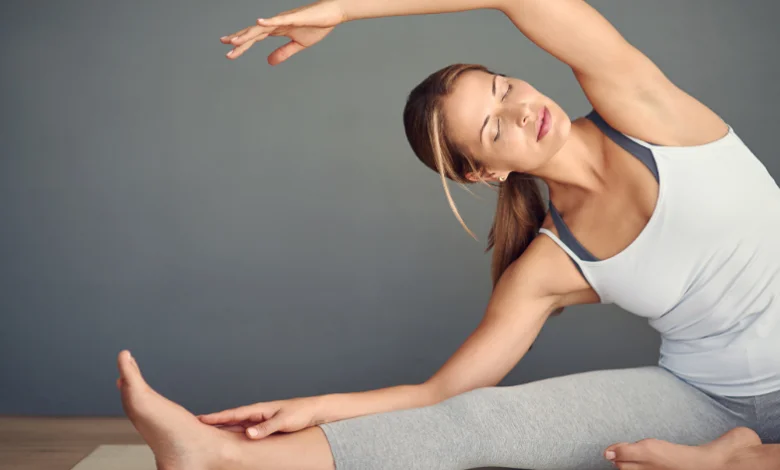Unlocking the Power of Visualization: Transform Your Meditation Practice with SmartFitYoga

Visualization is a transformative technique that can significantly enhance your meditation practice. By engaging your imagination, you can deepen your mental focus, reduce stress, and achieve personal growth. This article explores the benefits of visualization in meditation and how SmartFitYoga can help you integrate this powerful practice into your routine.
Table of Contents
What is Visualization in Meditation?
Visualization in meditation involves creating detailed mental images to guide your meditation practice. Unlike random daydreaming, visualization is a deliberate and focused process where you consciously imagine specific scenarios to influence your thoughts and emotions.
The Science Behind Visualization
Visualization works by leveraging your brain’s ability to simulate experiences. When you vividly imagine a scenario, your brain activates the same neural pathways as if you were actually experiencing it. This process can lead to significant changes in your emotional state and overall well-being, making visualization a powerful tool for personal development.
Benefits of Visualization in Meditation
Incorporating visualization into your meditation practice can offer a wide range of benefits, enhancing both your meditation experience and overall quality of life.
1. Enhances Mental Focus and Concentration
Visualization helps anchor your mind, reducing distractions and improving your ability to concentrate. By focusing on a specific mental image, you can maintain a deeper level of engagement in your meditation practice.
2. Reduces Stress and Anxiety
Creating mental images of serene and calming environments can activate your body’s relaxation response, helping to lower stress levels and reduce anxiety. This practice fosters a sense of peace that can extend beyond your meditation session.
3. Boosts Emotional Resilience
Visualization allows you to mentally rehearse overcoming challenges and achieving success, which can enhance your emotional resilience. This process helps you develop a more positive outlook and greater confidence in managing life’s difficulties.
4. Supports Goal Achievement and Motivation
Regularly visualizing your goals and aspirations reinforces your intentions and aligns your subconscious mind with your conscious objectives. This practice can boost motivation and increase your chances of achieving your goals.
5. Enhances Physical Health and Healing
Visualization can support physical well-being by imagining your body in a state of optimal health. This positive mental imagery can contribute to improved physical health and accelerate the healing process.
Steps to Integrate Visualization into Your Meditation Practice
To incorporate visualization into your meditation routine, follow these steps:
Step 1: Define Your Intentions
Determine the focus of your visualization practice. Whether it’s stress relief, goal setting, or emotional healing, having a clear intention will guide your meditation.
Step 2: Create a Relaxing Environment
Choose a quiet and comfortable space for your meditation practice. This environment will help you relax and focus better on your visualization.
Step 3: Start with Deep Breathing
Begin your meditation with deep breathing exercises to calm your mind and body. Inhale deeply through your nose, hold the breath for a moment, and exhale slowly through your mouth.
Step 4: Visualize Your Scenario
Close your eyes and create a detailed mental image of the scenario you’ve chosen. Engage all your senses to make the image as vivid and realistic as possible. For instance, if you’re visualizing a peaceful forest, imagine the sounds of rustling leaves, the smell of pine, and the feeling of cool, fresh air.
Step 5: Maintain Focus
As you meditate, keep your attention focused on the visualization. If your mind starts to wander, gently bring it back to the image. Regular practice will help improve your ability to stay focused.
Step 6: Reflect on Your Experience
After your visualization session, take a few moments to reflect on the experience. Notice any changes in your emotional state or physical sensations and acknowledge the benefits you’ve gained.
Tips for Effective Visualization
To get the most out of your visualization practice, consider the following tips:
- Start Simple: Begin with straightforward visualizations and gradually progress to more complex scenarios as you become more comfortable with the practice.
- Practice Regularly: Consistent practice is essential for developing your visualization skills. Incorporate it into your daily meditation routine for the best results.
- Use Guided Visualizations: If you find it challenging to create mental images on your own, guided visualizations can be helpful. SmartFitYoga offers guided meditation sessions that incorporate visualization techniques, making it easier to follow along and build your skills.
- Focus on Positive Imagery: Visualization is most effective when it evokes positive emotions. Choose images that bring you joy, peace, and a sense of fulfillment.
How SmartFitYoga Enhances Your Visualization Practice
SmartFitYoga provides valuable resources to help you integrate visualization into your meditation practice. The platform offers guided meditation sessions that focus on visualization techniques, offering expert guidance to help you develop and refine your skills. Whether you’re seeking stress relief, personal growth, or goal achievement, SmartFitYoga provides the tools and support you need to succeed.
Conclusion
Visualization is a powerful technique that can significantly enhance your meditation practice. By creating vivid mental images, you can improve your focus, reduce stress, and achieve personal growth. With the support of SmartFitYoga, you can master the art of visualization and unlock new levels of peace and well-being.
FAQs
1. What is the role of visualization in meditation?
Visualization helps focus the mind and guide thoughts towards specific goals or states of being, enhancing the effectiveness of meditation.
2. Can visualization help with stress management?
Yes, by visualizing calming and positive scenarios, you can activate relaxation responses in your body, which helps reduce stress and anxiety.
3. Is visualization suitable for beginners?
Absolutely. Beginners can start with simple visualizations and gradually progress to more complex scenarios as they become more comfortable with the practice.
4. How does SmartFitYoga support visualization practices?
SmartFitYoga offers guided meditation sessions that incorporate visualization techniques, helping users develop and improve their visualization skills.
5. How often should I practice visualization in meditation?
For the best results, incorporate visualization into your daily meditation routine. Consistent practice will help you develop your skills and experience the full benefits of visualization.




